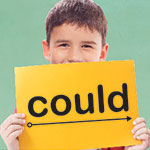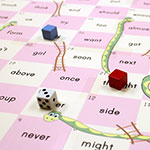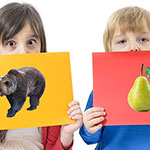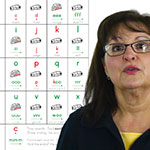What’s the good word?
Have you heard?
Sight words, sight words
Let's remember those words!

Purposeful practice for automaticity (aka repetition) is essential to skill mastery. The problem is when you drill children they get bored and don’t pay attention. Here are some chants and movement strategies to practice sight words, spelling words, and vocabulary words.
Clap and Snap – As you spell out words clap on the consonants and snap on the vowels.

Jumping Jacks – Do jumping jacks for each letter in a word.
Palm Pilot – Hold up one palm and trace the letters in a word with the index finger of the opposite hand. After making the letters say the word and “take it to the brain” by pretending to run your fingers up your arm to your brain.

Back Writing – Stand in a circle and spell out words on your neighbor’s back. Erase before writing a new word.
Cheer Words – Step back and forth as you clap and spell out words.
Give me an “E.”
“E”
I’ve got an “E” you’ve got an “E.”
Give me ….
What’s it spell? (Shout out word.)

Disco – Finger up in the air and move it across your body as you say different letters in a word. Hands on hips as you say the word.

Patty Cake – Children face a partner. They say the word as they clap. They cross and tap partner’s hands on each letter. Then high five and say the word in the air.
Air Writing – Children use their finger, foot, knee, tongue, elbow and other body parts to spell out words in the air.
March – Children march and swing arms on each letter. They salute and say the word at the end.

Body Writing
Tall letters (b, d, f, h, k, l, t) - touch your head
Tummy letters (a, c, e, i, m, n, o, r, s, u, v, w, x, z) – touch your tummy
Toe letters (g, j, p, q, y) – touch your feet
For example:
H – touch head
O – touch tummy
P – touch feet
Clap as you say the word “hop.”
Your Turn – Let children come up with their own creative ways to practice spelling words.






















































